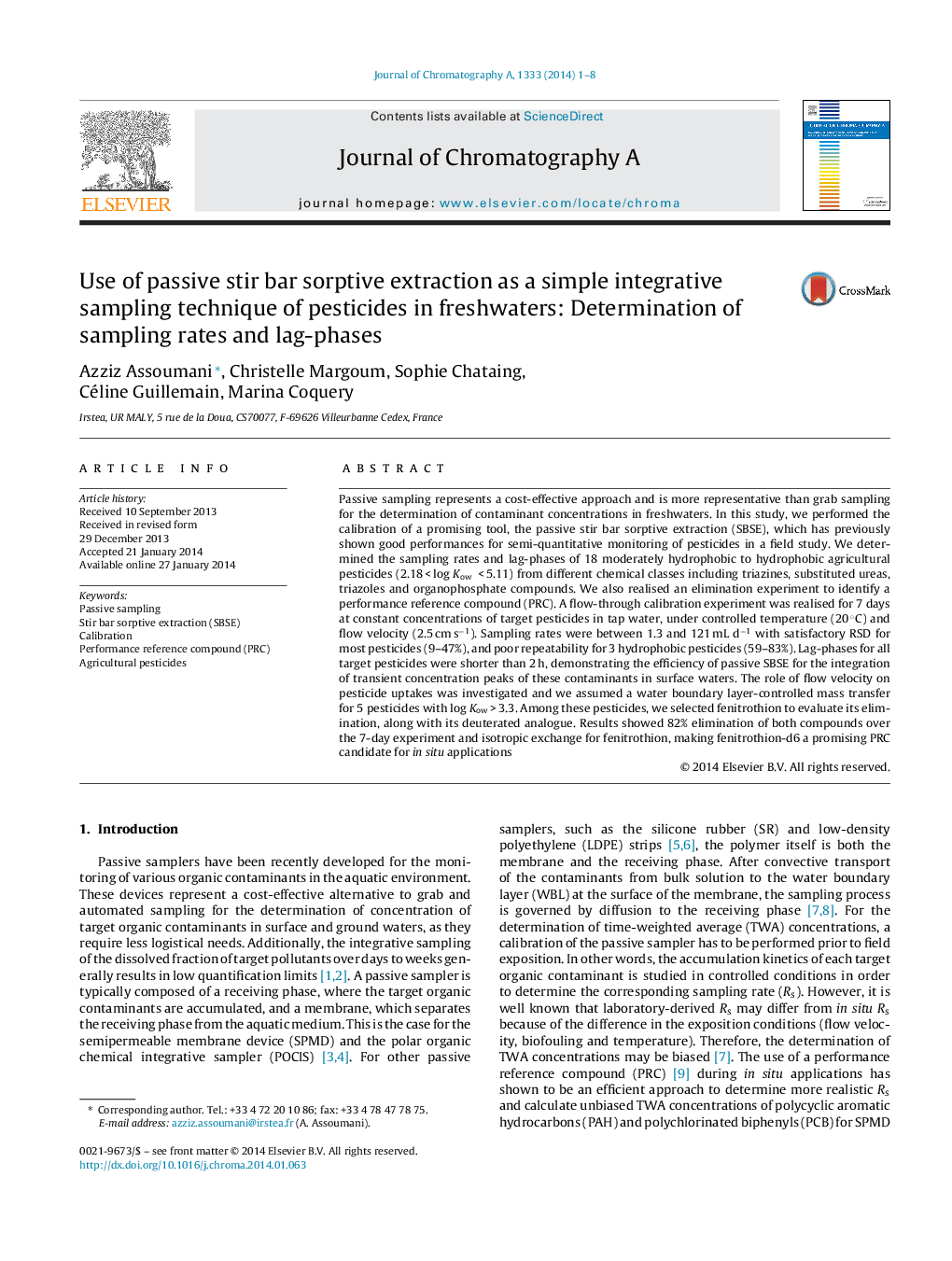| Article ID | Journal | Published Year | Pages | File Type |
|---|---|---|---|---|
| 1200114 | Journal of Chromatography A | 2014 | 8 Pages |
•Stir bar sorptive extraction is used as a passive sampler in water (passive SBSE).•Passive SBSE is calibrated for 18 pesticides in a flow-through system.•Accurate sampling rates and short lag-phases are determined for all pesticides.•We observe the impact of flow velocity on the uptake of 5 hydrophobic pesticides.•Fenitrothion-d6 is shown as a promising performance reference compound candidate
Passive sampling represents a cost-effective approach and is more representative than grab sampling for the determination of contaminant concentrations in freshwaters. In this study, we performed the calibration of a promising tool, the passive stir bar sorptive extraction (SBSE), which has previously shown good performances for semi-quantitative monitoring of pesticides in a field study. We determined the sampling rates and lag-phases of 18 moderately hydrophobic to hydrophobic agricultural pesticides (2.18 < log Kow < 5.11) from different chemical classes including triazines, substituted ureas, triazoles and organophosphate compounds. We also realised an elimination experiment to identify a performance reference compound (PRC). A flow-through calibration experiment was realised for 7 days at constant concentrations of target pesticides in tap water, under controlled temperature (20 °C) and flow velocity (2.5 cm s−1). Sampling rates were between 1.3 and 121 mL d−1 with satisfactory RSD for most pesticides (9–47%), and poor repeatability for 3 hydrophobic pesticides (59–83%). Lag-phases for all target pesticides were shorter than 2 h, demonstrating the efficiency of passive SBSE for the integration of transient concentration peaks of these contaminants in surface waters. The role of flow velocity on pesticide uptakes was investigated and we assumed a water boundary layer-controlled mass transfer for 5 pesticides with log Kow > 3.3. Among these pesticides, we selected fenitrothion to evaluate its elimination, along with its deuterated analogue. Results showed 82% elimination of both compounds over the 7-day experiment and isotropic exchange for fenitrothion, making fenitrothion-d6 a promising PRC candidate for in situ applications
